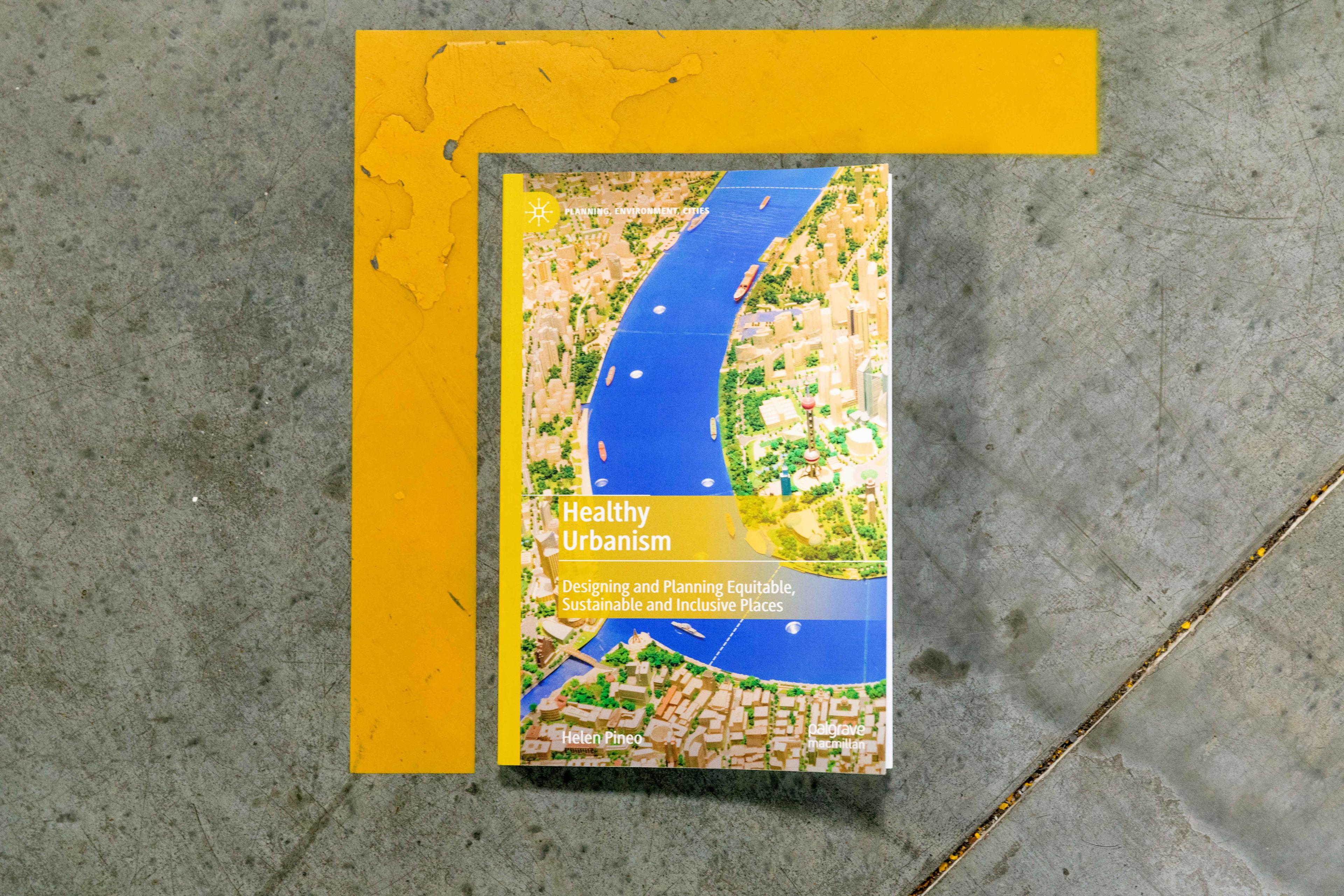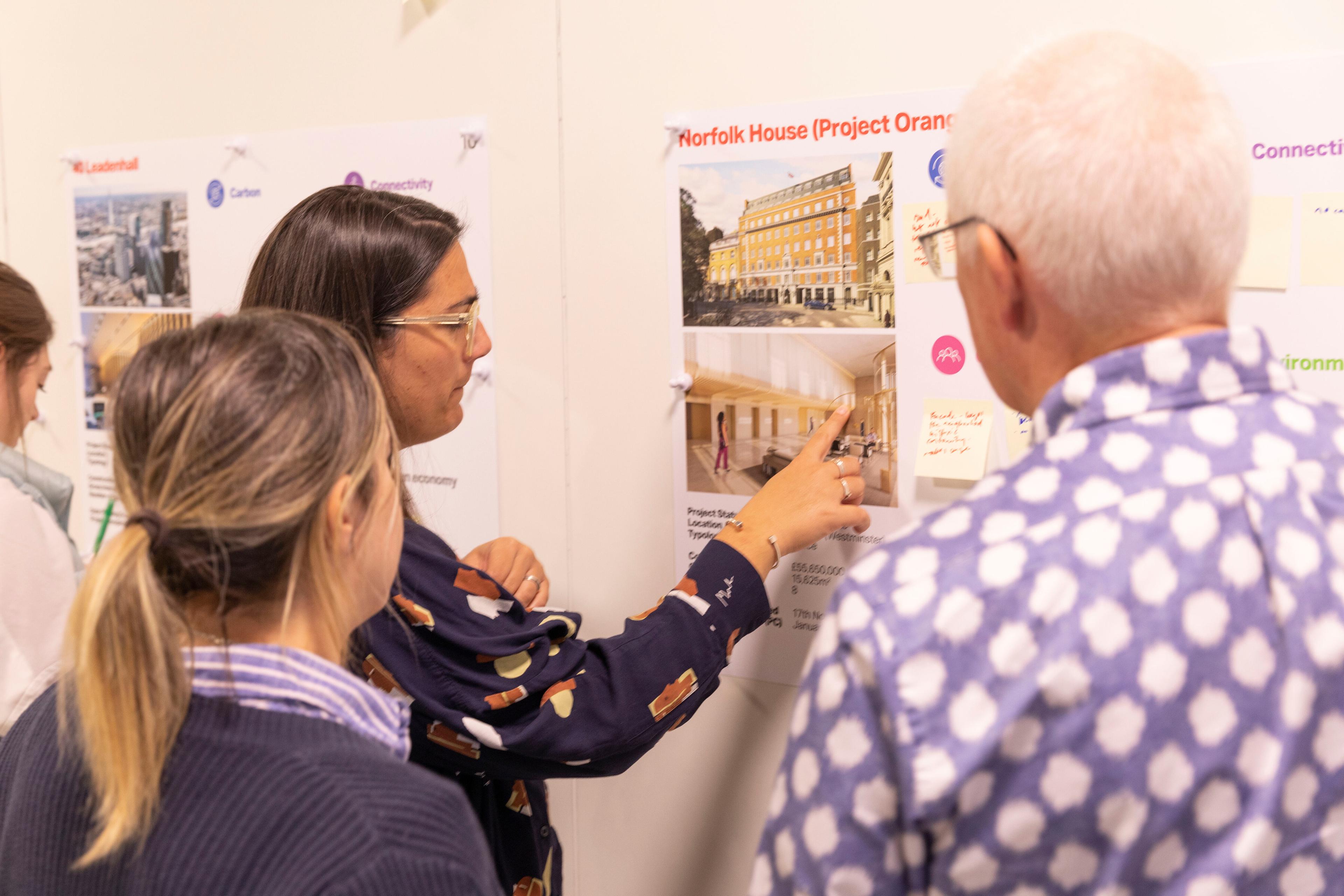Interview: Healthy Urbanism
by Dr Helen Pineo, University College London
2022
Dr Helen Pineo is an academic and urban planner specialising in urban health and sustainability. Her new book, Healthy Urbanism, explores ways that urban planning, design and development can support human health and wellbeing, with a focus on equity, inclusion and sustainability. Here she discusses the links between environment, people and society, and why we need to reframe the way we talk about healthy spaces.

Healthy Urbanism emphasises the reciprocity between society and the built environment, in particular the impact of design and planning decisions on our health. What prompted you to research this topic?
In a previous role, I was Associate Director for Cities at the Building Research Establishment, which undertakes thinking around future cities. I was asked to create a healthy city index and realised how much of a focus there is on lifestyle choices when we talk about health. There’s a real disconnect from the role our environment plays, and a lack of attention to the inequities this can cause. I saw this as a gap that needed to be addressed.
I think the issue starts with our curriculum in the built environment professions. Most courses don’t get into those issues of inequity in architecture and planning studies. As practitioners, we don’t necessarily understand the impact we’ll have on communities, what existing issues we’ll exacerbate. There’s a huge need in higher education to integrate this into the curriculum – not just for health but also for other factors that are important to our day-to-day to lives.
We’re now seeing wellbeing, safety, mental health and the climate crisis coming to the fore of conversations around health. Did these topics arise in your research?
Yes. What I find interesting are the historical parallels – where these things have already been discussed or even fixed in some places, and also where we’ve done well but don’t seem able to recognise or replicate that. Political agendas shift, and health falls down the agenda. In the 1970s, for example, there was a shift away from a biomedical model of health towards an understanding of the wider factors affecting wellbeing, but there haven’t consistently been the resources in place to address this. We can see the impact now on people who grew up in low-quality housing, children who didn’t have access to outdoor places for play. These impacts will continue to be seen.
The biomedical model, which essentially views health issues as being solvable within the healthcare system, isn’t enough, but it’s still a strongly supported model, especially in the West. It takes a lot of re-educating to see that.

You write in your book that healthy spaces have been part of city building for millennia. Do you think our priorities have shifted along the way?
I think the knowledge we’ve lost along the way is probably underestimated. As we become more attuned to listening to other ways of working and different forms of knowledge, we’re understanding that places around the world have had sustainable solutions to modern problems, such as flooding and overheating in buildings. Nature-based solutions aren’t new, we’ve just tended to disregard those approaches in favour of concrete and energy-intensive options, but that is starting to change.
I’m thinking about China specifically and an example from the book about the shift in engineering practices in a city called Ningbo. In ancient times, people used mulberry bushes to stabilise the soil, forming the banks of canals that over time were indistinguishable from naturally formed channels. The channels were part of water management in partnership with agriculture. Later these practices were replaced with concrete and other grey infrastructure, creating flood risks. Now the city is part of a national programme, Sponge Cities, that is returning to nature-based solutions to manage flooding.
Your book includes many case studies of healthy urban development in practice today. What’s one you think people should know about?
I get excited about them all, but I love the Nightingale Housing example from Melbourne, Australia. The main aim was to deliver sustainable and affordable housing, both of which are are important for health.
By using passive design measures for thermal comfort and ventilation, and by providing shared laundry facilities in place of individual washing machines, it became effective not only in terms of finances and sustainability but also wellbeing and social value. Shared garden and social eating spaces, among other amenities, created opportunities for social interaction, for people to come together. That’s a really interesting example that’s now being scaled up in Australia.
There are some startling figures that frame the topic of healthy urbanism, including the WHO finding that nine out of ten people around the world are exposed to unsafe levels of air pollution. Did these figures surprise you?
I found a lot of the figures from the most recent reports and risk estimates to be shocking. We’re living in a society where people are dying from air pollution every year, yet we aren’t talking about it as much as you’d think. Like COVID, it’s a significant burden of disease and day-to-day suffering that we’re putting up with but don’t need to; it’s not inevitable.
I was especially shocked by the impact on children – even unborn foetuses are affected by air pollution. I make the point time and time again in the book that environmental exposures are higher in low-income and racial and ethnic minority neighbourhoods. That point is gaining traction, but it isn’t well-enough understood.
It’s interesting to consider mapping the infrastructure in a city and looking at other factors that contribute to pollution, lack of amenities and risk of overheating among certain communities. Urban planners should use the vulnerability assessment tools available to them as a starting point for understanding where, for example, green infrastructure could be prioritised to address overheating. You could have targeted interventions that support higher-risk populations, such as the elderly.
There are also universal interventions that benefit everyone. Green infrastructure has benefits across the wider city and region, not just the people in the immediate area, and can be integrated at different scales. Just a few trees can provide shade and respite in an uncomfortable area, whether it’s a house or a barren public space. London is generally considered a green city, but there are parts of it that really are not.
Are we approaching healthy urban development at the right scales? There’s a lot of support for green spaces and cycling paths, but should we be paying more attention to particulars like building orientation, landscaping etc?
It’s important to look at it from all of those scales. When I see new developments or refurbs with low-energy and passive designs, I find them really impressive. They aren’t the norm; they’re going above and beyond what’s required, and they’re not necessarily the things clients are looking for.
We have to think across sectors too. Healthy office places have had a lot of attention. But healthy homes are so important and can be done much more cost-efficiently early in the design process. We spend so much time in buildings, in our homes, schools and workplaces; we need comfortable, affordable spaces, especially with increasing energy costs and a warming climate.
Increasing ventilation would be a good starting point for preventing future pandemics or routine respiratory infections. The case is being made fairly strongly that we could have better health if we weren’t exposing ourselves to seasonal flu and other respiratory infections.
Has the COVID pandemic influenced, or even accelerated, any of the thinking around this?
I hesitate to put a silver lining on COVID. It has helped people understand associations between health and environment; we saw these interconnections. But it has also created a huge number of challenges with regard to the resources available for addressing the wider determinants of health. The focus has been – and rightly so – on immediate healthcare provision and vaccinations, but there isn’t enough money going around to think about other requirements for community health services, for mental health and wellbeing. That trickles down into the work we’re doing in the built environment.
It’s important to understand that going forward, we won’t be experiencing just one single threat at a time. We’ve had COVID at the same time as wildfires, overheating and other extreme weather events. Dealing with these risks together was hard for systems around the world, and this will continue. We need a systems thinking approach going forward.

Your book advocates for a hopeful, solutions-oriented perspective. Can you elaborate on this?
I have a master’s degree in linguistics, so I find it really important to consider the best way of communicating complex problems by considering the way our brains process information. We don’t want people to feel despair and close down when we talk about the need for healthy urbanism. If you use doom-and-gloom messaging, it leads to inaction. People just can’t cope; they push it aside.
Instead, we focus on solutions. There are lots of straightforward, low-cost actions we can take to improve issues like air pollution, and while some solutions are small in impact, they’re part of the larger effort. I want urgent change, but incremental bottom-up or top-down projects can also be impactful because they can lead to greater awareness in society, eventually shifting political agendas.
As part of this, you’ve developed the THRIVES Framework, which explores healthy urbanism across a huge scale, from individual buildings up to urban regeneration plans. Can you tell us about its development and application?
There’s a widely used health map from 2006 that I felt was lacking in its emphasis on equity and inclusion. Although the authors are respected colleagues, the information we’re drawing on has changed, and I wanted to emphasise that. It’s challenging for people to think about these impacts. Creating a visual diagram that’s supposed to help people conceptually grasp such a big topic is tough! We had a lot of conversations about what the framework would mean and how you could use it. We also held a participatory workshop to ensure different audiences would understand the graphic.
The framework helps practitioners to explore how a particular development addresses health at different levels, with specific design and planning goals to keep in mind. Will the development be affordable? Are there lots of ways it can be used? I hope the framework can help us broaden health impact assessments.
I use it in my consulting and teaching, and I can see that other organisations are using it in reports and engagement activities. The THRIVES framework was published in UN Habitat’s World Cities Report 2022: Envisaging the Future of Cities. The London Community Land Trust held a workshop using the framework to prompt people to talk about how new housing affects health at multiple spatial scales. At UCL, we also ask our master’s students to produce short case studies using the framework.
Now that we can see practical applications of the framework, I’d like to put more resources into our online healthy urbanism training (https://www.ucl.ac.uk/short-courses/search-courses/healthy-urbanism) for how it can be used in practice.
Are there places we can look to as leaders in healthy urbanism?
There’s a lot of attention in the United States on sustainable and equitable planning policy. Many cities are reviewing equity in their green infrastructure and climate change policies. I haven’t seen that as widespread in the UK, possibly due to the impacts of austerity on local government planning departments. I think there will be helpful lessons coming out of the US on how to approach equity and inclusion in planning and development.
I’m working on a new project looking at global exemplars of sustainable, equitable urban development. We’re doing deep dives into those stories, looking at how changes have occurred, and we hope to discover some new and different ways to share the findings that aren’t academic papers. Like I said, I feel strongly that storytelling is key.


